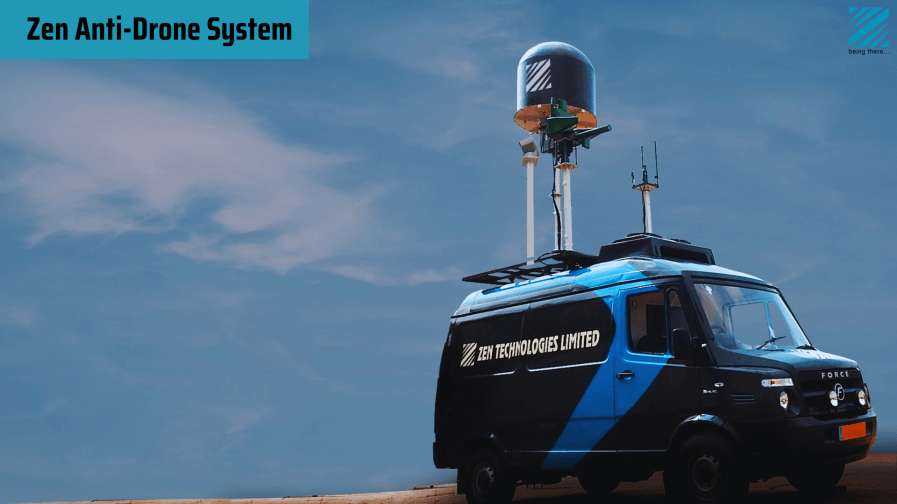In the previous articles we have covered RF Detection, RADAR Detection, and Visual Detection techniques for detection of hostile drones. As is apparent, these techniques have their peculiar advantages as well as disadvantages. For instance, RF detection is ineffective against autonomous drones which do not need to stay in communication with the ground control communication centre, while performing its mission. Similarly, RADAR detection while effective against autonomous drones would typically be unable to detect a hovering drone. Visual detection is affected by conditions of low visibility. Therefore, there is no one-size-fit-all solution for an anti drone system.
The best bet would be to design a multi sensor anti drone system, that can detect the drone progressively, as it enters into the protected air space. Typically, the drone would be first detected by the RF detector and a rough direction of arrival computed. In the event of the drone also being detected by the RADAR, the angle of arrival would be somewhat more accurate. This direction of arrival is then fed to a servo motor that will then rotate the EO/IR camera in the expected angle of arrival to confirm the drone visually once it appears in its field of view. At this stage counter drone measures such as hard kill and/or soft kill can be considered.
As is obvious, the real challenge here is to identify and then classify the drone by fusing the disparate data inputs obtained from the various sensors.
If RADARS are part of the solution, micro doppler detection can determine the number of rotor blades and the length of the blades which can assist in classification. If cost or other considerations preclude use of radar, signal processing techniques are the other means of classification.
For RF detection, analysis of the spectrum occupancy of commercially available drones indicates that they operate generally in 2.4 GHz and 5 GHz portion of the spectrum. The 2.4 GHz portion of the spectrum is particularly congested due to Wi-Fi and Bluetooth signals occupying it. At times drones could also be using Wi-Fi or Bluetooth signals as command links making the problem of classification more challenging. Alternately, drones could be using a proprietary spread spectrum protocol at the same centre frequency as Wi-Fi. Finally, for an anti-drone strategy classification will also imply the identification of the type of drone.
One approach towards classification is based on detecting the changes in the aerodynamic profile of the drone as it carries out various manoeuvres such as take-off, hovering and flying. There are two key movements – one on account of body shifting due to control system and next of vibrations in the body due to spinning propellers. The body shifting movements modulate the transmitted RF signal from the drone. Detection of body movement is done through Wavelet analysis in the time domain. A wavelet is a wave-like oscillation with amplitude that begins at zero, increases, and then decreases back to zero. Wavelets are especially good at capturing brief oscillations of the drone.
Therefore, in a multi sensor situation the Data Fusion Command Centre becomes the heart of the system controlling the operation of the anti drone system. Data fusion is fairly complex since the nature of the threat keeps varying as does the parameters detected. Determining, that these are not separate targets but actually belong to a single target, help needs to be taken of Image processing algorithms and Machine Learning algorithms which can significantly reduce the time for image classification.

Machine Learning approaches to RF classification involve creating a database

of RF transmissions from a drone in its various modes of operation such as take-off,manoeuvring, hovering, video recording, and landing.Deep Neural Networks can be trained to detect presence of a drone, type of drone and its mode of operation.

Zen Anti-Drone System is a classic example of a Multi-Sensor Anti Drone System which uses RF & RADAR based detection system and a Video based tracking system. With this we come to an end of the series on Drone Detection. From next week, we will bring you articles on Drone Suppression Systems such as Hard Kill & Soft Kill.